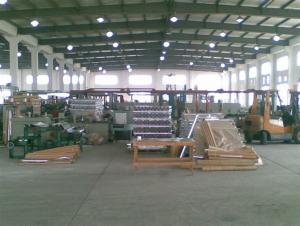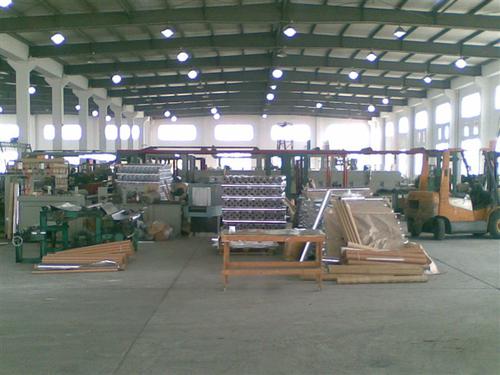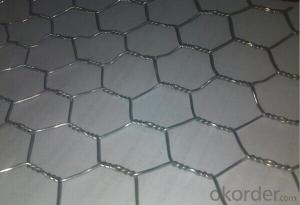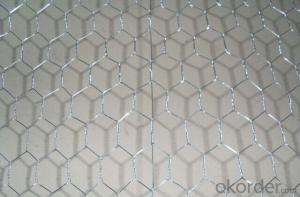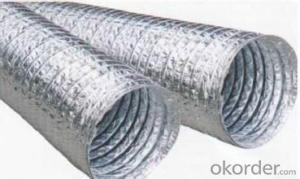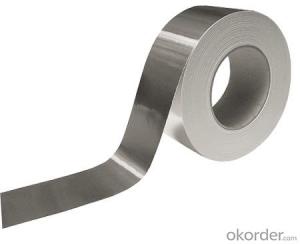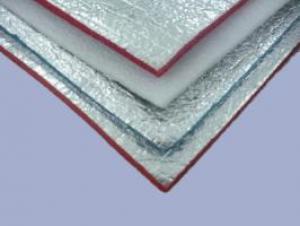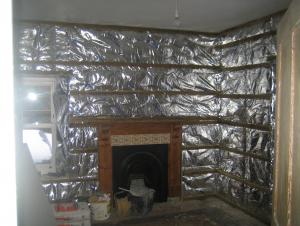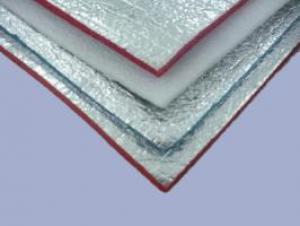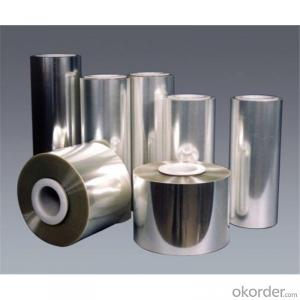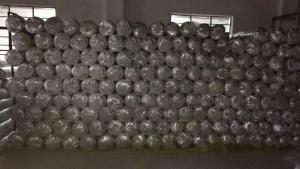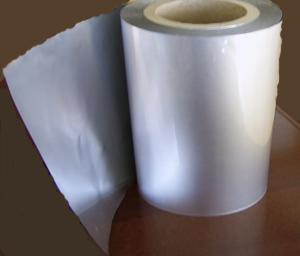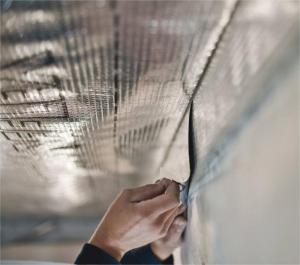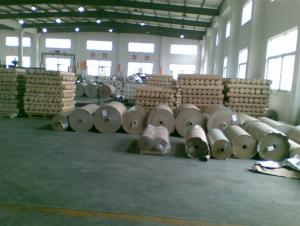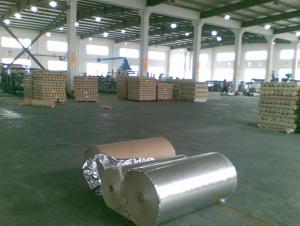Aluminum Foil Facing PE Coated Aluminum Foil Woven Fabric
- Loading Port:
- China Main Port
- Payment Terms:
- TT OR LC
- Min Order Qty:
- -
- Supply Capability:
- -
OKorder Service Pledge
OKorder Financial Service
You Might Also Like
Specifications
aluminum foil mesh cloth/fiberglass mesh backed alu foil:To be sealed on glass wool or other duct wraps of HVAC system
Detailed Product Description
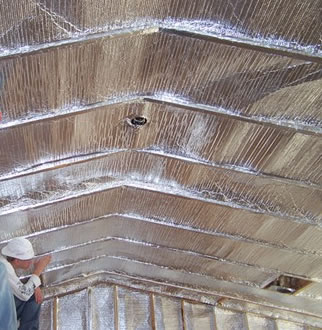
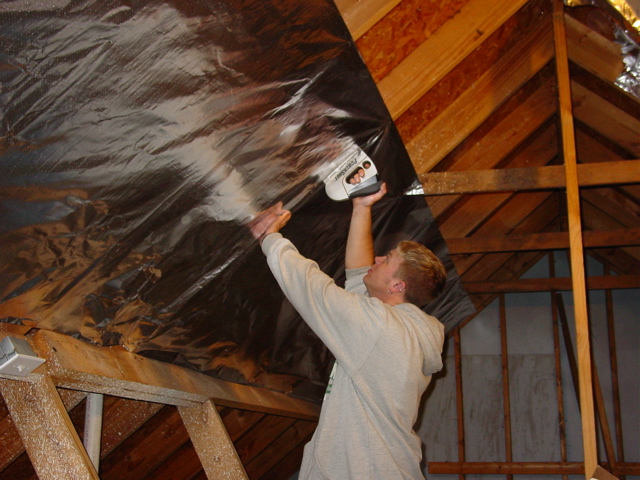
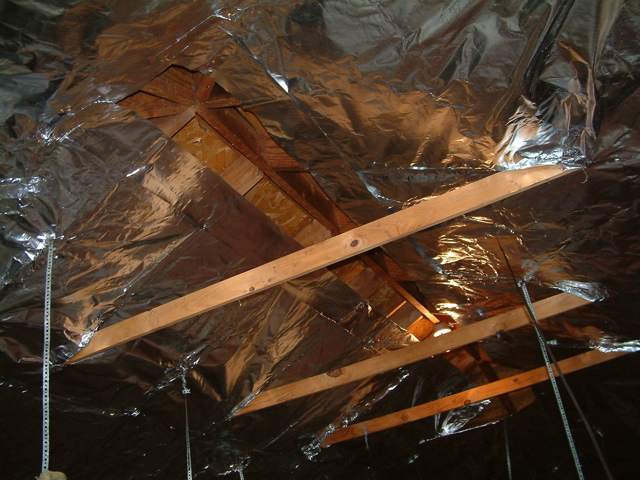
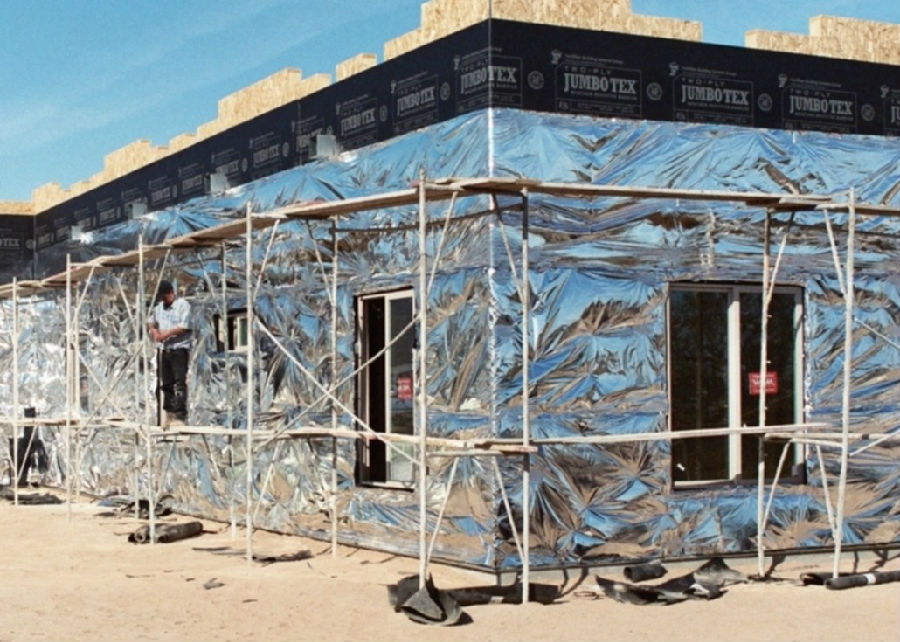
Reflective Insulation
1.Alu. Foil:7microns
2.Kraft paper:50/60gsm
3.Tri-way scrim
4.wall & house insulation
Model 1:Double side reflective alu foil FSK:
Model: FSK-7160A
7u AL/ 3 way fiberglass Scrim: 8 x 12mm / PE / Kraft: 60gsm / PE /7u AL
Model: FSK-7160B
7u AL/ 2 way fiberglass Scrim: 12.5X12.5mm / PE / Kraft: 60gsm/ PE /7u AL
Model 2:Kraft paper:
Model: FSK-7160A
7u AL / 3 way fiberglass Scrim: 8 x 12mm / PE / Kraft: 60gsm
Model: FSKV-7150B
7u AL/ 2 way fiberglass Scrim: 12.5X12.5mm / PE / Kraft: 50gsm
Specifications:
1) Roll width: 1.2, 1.25, 1.3, 1.35m
2) Roll length: 50-100m.
Application:
To be sealed on glass wool or other duct wraps of HVAC system, or to be used as sound/heat insulator for high-rise buildings and hotels, or works as vapor barrier and thermal insulation facing for metal building. Excellent thermal insulation materials of the steam heating pipelines, sound-proof materials in construction and the protective layer of glass wool blanket as well as the packing materials for the export equipment with excellent functions of non-combustible, heat isolation, vapor barrier, mildew proof, anti-corrosion, and sound absorbability.
- Q: This question asks for methods to properly store aluminum foil to ensure its longevity.
- <p>To store aluminum foil properly and make it last longer, keep it in a cool, dry place away from direct sunlight. Use a foil container or a resealable plastic bag to store it. Avoid stacking heavy items on top of it to prevent crushing. When using, always cut the foil from the end to minimize exposure to air, which can cause it to oxidize and weaken. Additionally, you can use a paper towel to wipe the foil before storing to remove any food particles that might cause it to stick together or degrade in quality.</p>
- Q: What are the alternatives to using aluminum foil facing in various applications?
- <p>Yes, there are several substitutes for aluminum foil facing. These include: 1) Heavy-duty aluminum foil, which can be used for a more durable barrier. 2) Parchment paper, which is great for baking and resists tearing. 3) Silicone baking mats, reusable and non-stick. 4) Wax paper, useful for wrapping and storage but not for high heat. 5) Plastic wrap, suitable for food storage but not for cooking. 6) Tin foil, a cheaper alternative but less heat resistant. Always consider the specific needs of your application when choosing a substitute.</p>
- Q: What are some effective ways to utilize aluminum foil in the kitchen?
- <p>Using aluminum foil effectively in the kitchen can enhance cooking and food preparation. Here are a few tips: 1) Line baking sheets to prevent food from sticking and make cleanup easier. 2) Create a tent over food when roasting to retain moisture and prevent over-browning. 3) Use foil to wrap individual portions for steaming or baking, which can be helpful for portion control. 4) Create a foil packet for cooking fish or vegetables on the grill or in the oven, which helps to steam and retain flavors. 5) Use foil to shape and mold food, such as a bowl for a souffl茅 or a mold for jello. 6) Double or triple layer the foil for durability when wrapping meats or creating containers. 7) Cut a small piece of foil to cover a small dish or to create a makeshift lid. Always handle with care when removing hot foil from the oven, as it can be very hot.</p>
- Q: Can I use aluminum foil as a substitute for a non-stick surface when making a grilled cheese sandwich?
- <p>Yes, you can use aluminum foil to make a grilled cheese sandwich. Place the sandwich on a sheet of aluminum foil, then fold the foil around the sandwich to create a sealed packet. This method will allow the sandwich to cook evenly and prevent sticking. However, be cautious as aluminum foil can tear or puncture easily, and ensure it doesn't come into direct contact with the heat source to avoid burning or melting. A non-stick pan or a piece of parchment paper is usually recommended for better results and easier handling.</p>
- Q: This question asks for the steps to prepare aluminum foil for cooking, specifically how to set it up.
- <p>To prepare aluminum foil facing for cooking, first, cut a piece of aluminum foil larger than the cooking surface. Clean the foil to remove any dust or debris. Lightly grease the foil with cooking spray or oil to prevent food from sticking. Fold the edges of the foil up to create a shallow tray, ensuring the sides are high enough to contain any juices. Place the foil on the cooking surface, and you're ready to cook. Always handle the foil with utensils when hot to avoid burns.</p>
- Q: What are the methods to stop the aluminum foil from curling at the edges while cooking?
- <p>To prevent the edges of aluminum foil from curling up during cooking, you can dampen the edges with a little water or cooking oil. This helps to weigh down the foil and keep it flat. Additionally, you can fold the edges inward to create a small rim, which can help contain the food and prevent the foil from lifting. Another method is to use a heavier object, such as a ceramic dish or a small pan, to press down on the foil, keeping it in place. Ensure that the object is heat-resistant and won't react with the foil. These techniques can help maintain the integrity of your foil and keep it from curling up during the cooking process.</p>
- Q: Is it possible to use aluminum foil facing as a substitute for a roasting pan?
- <p>While aluminum foil facing can be used in some baking situations, it is not recommended to use it as a direct substitute for a roasting pan. Aluminum foil is not designed to withstand the high temperatures of a roasting process and can melt or warp, leading to uneven cooking and potential safety hazards. A proper roasting pan is made to handle high heat and distribute it evenly, ensuring that your food cooks properly. For best results and safety, use a designated roasting pan or a baking sheet with a higher heat tolerance.</p>
- Q: The user is asking for alternative uses of aluminum foil facing, beyond its common applications.
- <p>Absolutely! Aluminum foil facing has several unexpected uses. It can be used to clean stubborn grime and rust from cookware and tools. It's also great for creating a reflective surface to direct sunlight for better indoor lighting or to speed up the thawing of frozen items. In gardening, it can deter pests and reflect heat to warm your plants. Additionally, it can be used to sharpen scissors or knives by cutting through it multiple times, and it can even be used as a fire starter in camping situations. These are just a few creative ways to use aluminum foil facing beyond its typical applications.</p>
- Q: The user is asking if it's possible to use aluminum foil with a shiny side facing outward to create a sandwich roll.
- <p>Yes, you can use aluminum foil to make a sandwich roll, but it's not recommended to use the shiny side facing outward. The dull side of the foil is typically used for food contact because it's less likely to transfer any potential residues or chemicals to the food. The shiny side may have a coating that isn't safe for direct food contact. Always ensure that the foil is food-safe and use it according to the manufacturer's instructions.</p>
- Q: This question asks for a method to create a facing made of aluminum foil.
- <p>To make your own aluminum foil facing, you'll need aluminum foil and a suitable adhesive. Start by cutting the aluminum foil to the desired size and shape. Apply a layer of adhesive to the back of the foil, ensuring it's evenly spread. Press the foil onto the surface you want to cover, smoothing out any bubbles or wrinkles. Use a knife or scissors to trim any excess foil. Allow the adhesive to dry completely before handling. This creates a reflective surface that can be used for insulation, decoration, or other purposes.</p>
Send your message to us
Aluminum Foil Facing PE Coated Aluminum Foil Woven Fabric
- Loading Port:
- China Main Port
- Payment Terms:
- TT OR LC
- Min Order Qty:
- -
- Supply Capability:
- -
OKorder Service Pledge
OKorder Financial Service
Similar products
Hot products
Hot Searches
Related keywords
